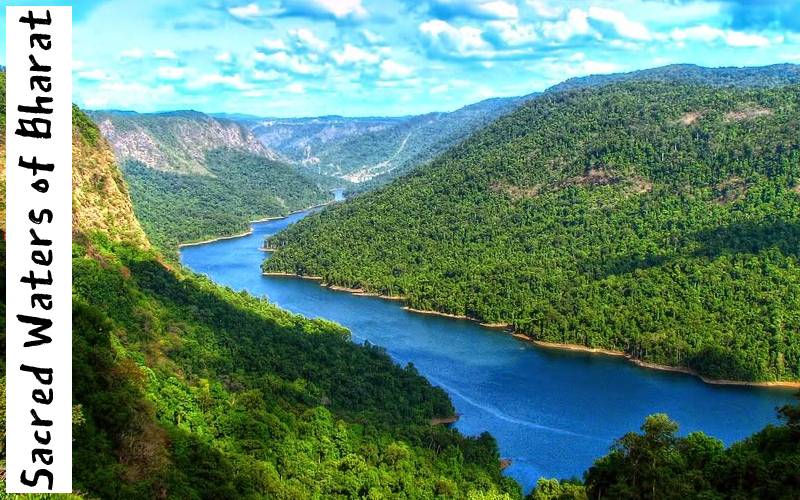
India has always been known as the land of seven rivers. The seven rivers happen to be Indus, Jhelum, Chenab, Ravi, Beas, Sutlej and Saraswathi. Water was always sacred for Indians. They connected Ganga to the feet of Lord Vishnu. The holy river had flowed down from the tresses of Lord Shiva, and this happened on the request of Bhagiratha. Water could never be wasted, for it is treated valuable and considered as the manifestation of Goddess Lakshmi herself. Fresh water is harvested and used properly.
Reverence to water was ever present. Prayers which contained the names of the rivers of the land were chanted during a bath or when water was used on important occasions. Every river in our country is treated holy. Several stories and folklores construe the facts connected with the sacredness of the rivers of Bharat. At the origin of each river, a temple dedicated to the respective Goddess can noticed. Shrines present at Thala Cauvery, Gangotri, Yamunotri etc., are popular pilgrimage sites from time immemorial.
Origin of each river relates to the purana of the land. In fact, stories tell us how rivers vied with each other when it came to sacredness. Cauvery prayed to Lord Vishnu and was granted a status greater than Ganga. There are, therefore, shrines of Lord Vishnu as Ranganatha on the Cauvery (Srirangapattinam, Jaganmohana Ranganatha and Srirangam). All the rivers of the land visit Cauvery during the Tamil month of Aippasi (Thula masam) to cleanse themselves. The sins of each one of us are cleared by the holy rivers and a bath in the sacred Cauvery rids oneself of the accumulated sins.

Stones from the bed of Narmada are installed as Bana lingams in temples. The lingam in Pettai Visweswaraswamy temple at Coimbatore is from the Narmada. Raja Raja Chola brought the stone for making the lingam at the Brihadeeswara temple from the same sacred Narmada. His son Rajendra Chola undertook an expedition until Ganga and brought back waters of the river on 108 elephants to perform a Veerabishekham (Victory bath) on the king in the banks of Godavari. The golden pitchers were taken to the new Chola capital Gangaikondacholapuram and used for the temple rituals. Most of the water was deposited in the tank Cholagangam.
Temples were built on the banks of rivers, and they were also built on the islands found amidst them. Majuli the island found within the Brahmaputra is the largest river island in the world and it has satras where the ‘Bhagavata Purana’ is read. Shankara Deva had initiated several bhaagavata traditions in the north-eastern part of Bharat. The rivers were treated as Gods and therefore offerings were made to them. aarati-s and pooja-s are part of the lore. The Ganga aarati-s are quite famous.
River confluences are important too. These are known as Sangam or Sangamam-s. In Tamil, they are known as Kooduthurai-s. These sangam-s are sacred. The most popular one is the Triveni Sangamam in Prayagraj. It is the spot where the rivers Ganga, Yamuna and Saraswathi meet each other. Holy pushkaram-s are celebrated on the riverbanks. These include the Kumbh mela-s of the yore. The Kumbh mela is celebrated once in 12 years on the banks of Ganga. Millions congregate on the location, and it is among the grandest event on earth. Thereafter, the pushkaram shifts from one river to the other. This conveys that all the waters of Bharat are sacred. No wonder the land is called Karmabhoomi.
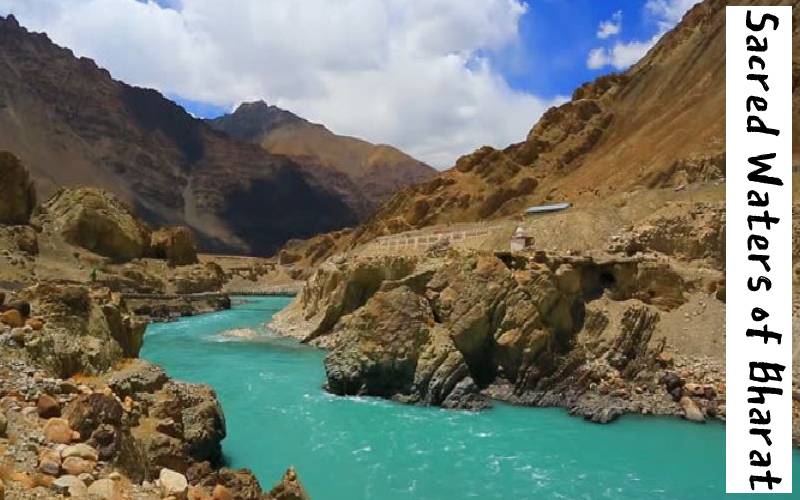
It is not just the rivers, but the seas are also sacred. Samudra aarati-s are being performed on the seashores. A group of enthusiasts have been performing the samudra arati at Rameswaram. This has been happening on the Pournami (Full moon day) of each month. The seashore is windy, and so a special aarati apparatus has been created. The aarati is now being extended to Chennai, Pondichery, Vedaranyam, Tiruchendur and Kanyakumari on 20/09/2021.
Several ponds and lakes are sacred too. The most important among them are Manasarovar, Narayansarovar, Bindusarovar, Pampasarovar, and Pushkar. Devotees consider it to be a good fortune to visit these water bodies and offer their prayers. Tamil Nadu, the temple state of the world, is famous for its temple tanks. The temple tank at Thiruvarur is quite huge. It has a shrine in the center. Temple tanks are used for the Theppotstavams (Celebrations done inside the tanks). The Nala Theertham at Thirunallar (The center for Shani worship) was created by Nala to get rid of miseries. It is said to possess miraculous powers. The Nalakoopam or the well is located on the banks of the Nala Theertham and water from this well is used for the temple rituals.
Water from the Singa Theertham, a well located inside the Perur Patteeswarar temple is used for the ablutions. The well is built in an artistic manner. Its entrance and structure are endowed with fine sculptures. Water from the Ukkadam big tank was used for the ablutions at the Kottai Sangameswarar temple in Coimbatore, Tamil Nadu. Long ago, runners from Ganga used to carry water to the Jyotirlingam at Somnath. Unfortunately, the cruel destruction of Somnath by religious marauders led by Muhammed of Ghazni disrupted this process. Another historic event is connected with Vaigai river and Lord Azhagar. He gets into the river annually and this is celebrated as a major event.
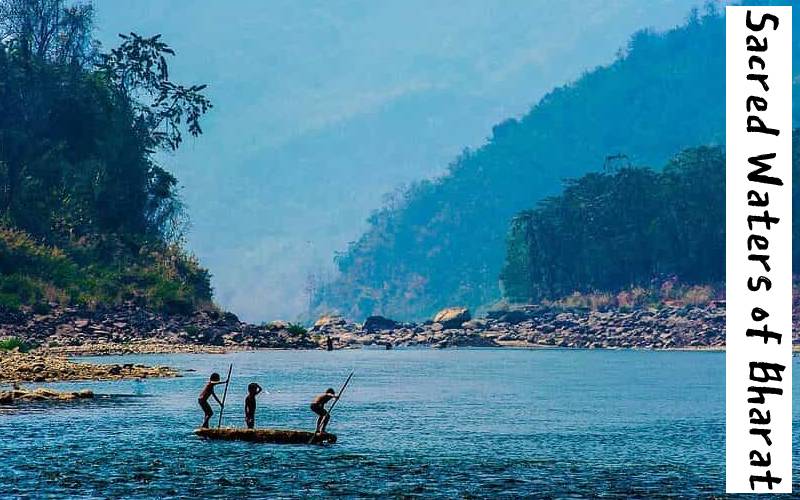
The Ramanathaswamy temple at Rameswaram has 22 theertham-s. Devotees visiting the temple employ guides who take them around the theertham-s. The guides or water volunteers draw out water from the theertham-s and pour it on the devotees. Dhanushkoti on the banks of the sea in Rameswaram is another holy theertham. Devipattinam is a tiny hamlet near the Bay of Bengal. It is home to the Navagraham-s (Nine planets) in the sea. They were supposedly installed by Lord Rama himself. People used to wade through the waters and offer their prayers to the nine planets.
Long ago, the devas had to churn the ocean in the company of the asuras for the purpose of getting the nectar of immortality (Amrit). Goddess Lakshmi came out of the ocean and garlanded Lord Narayana. Thereafter, Lord Dhanvantri got the amrit for them. Yamuna is sacred in the pushtimarg. The followers of Saint Vallabacharya follow this path. They offer their prayers to Yamuna and address her with great reverence as Yamunaji. Several songs and prayers are sung in praise of her.
The patience of Saint Eknath was known to the world from the banks of Godavari. Eknath was a noble soul. Some jealous characters wanted to test his patience. So they employed a person in order to spit on him. The man spat on Eknath after his regular bath in Godavari. But Eknath patiently took another bath. The wrong doer spat on him for 108 times and the great Eknath took bath as many times in the holy Godavari. The culprit’s mouth ran dry, but the patience possessed by Eknath seemed to be everlasting. The offender fell at his feet and sought his pardon. However, Eknath had a different opinion. He felt that it would have not been possible to have doused for 108 times in the holy Godavari, if not for the act of the miscreant.
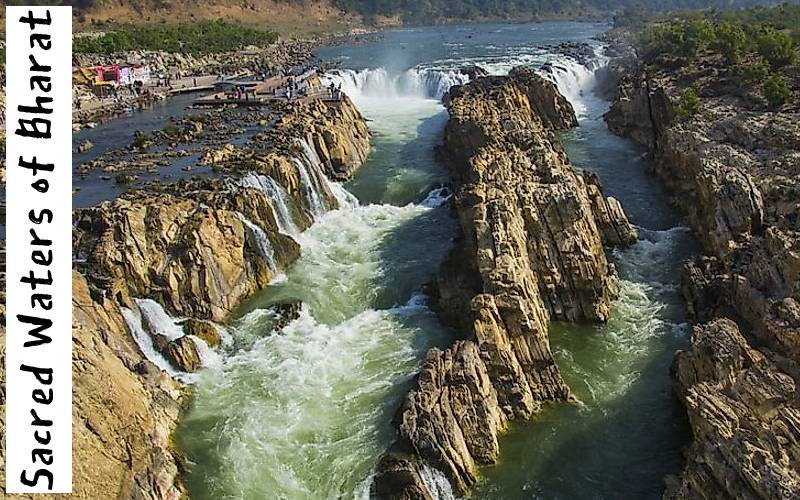
The pontiffs of the numerous holy mutts of our land use well-water for their prayers. Waters from well are used for bathing, cooking and also for performing abhishekam-s to the deities. Nowadays ground water pollution has made these waters dirty. A theertha yatra is undertaken by elders who have completed their sixty, seventy, or eighty years of marital life or after the celebration of their Kanakabishekham (a ritual conducted when the couple become great grandparents). They usually visit a holy river and have a bath in the same. They collect the waters from several holy rivers they visit and have a theerthaabhishekham conducted on the happy occasion. The near and dear pour water through a silver sieve and the Navarathnam-s (Nine gems representing the nine planets which chart one's destiny) that are placed in the same.
Temples are consecrated once in 12 years and an elaborate pooja is held wherein they pour sacred water on the temple kalasam-s. Deities are invited into water pitchers during times of a pooja or festival. People chant the names of rivers while having a bath every day. Since water is sacred it was never wasted. Any good act must be done with water. Therefore, water is sprinkled in the company of divine incantations while one indulged in charity. Dirtying water was a sin. The ones who took care of water is blessed with good merit. Indians are always known for revering nature in the form of the five elements. Water is part of the same and therefore held in high esteem.
The holy temple at Thirumala is famous for its tank Swami Pushkarini. It is very dear to Lord Venkatachalapathy. The holy Swarnamukhi adds to the sacredness of the Thirumala Hills.
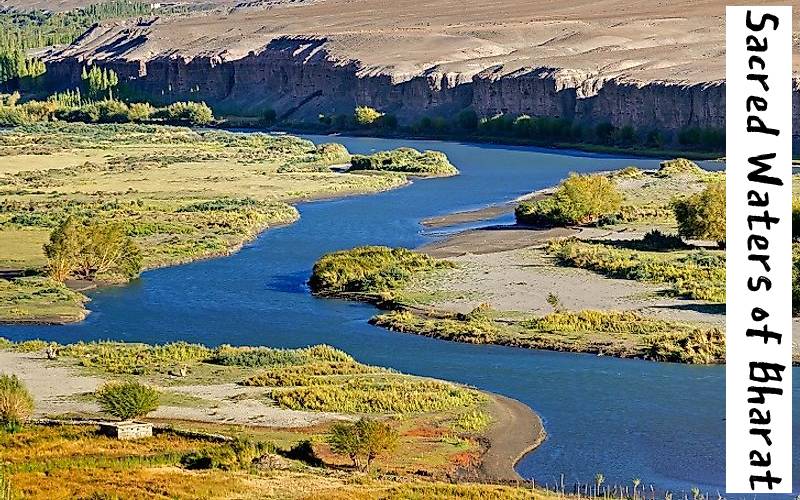
Goddess Lakshmi is represented in a Poorna Kumbham (A pitcher full of water with a turmeric smeared coconut surrounded by mango leaves placed on its opening). This poorna kumbham is used to invite holy seers and noble people visiting a temple. Let us celebrate the poorna kumbham by continuing to revere the holy water of Bharat.
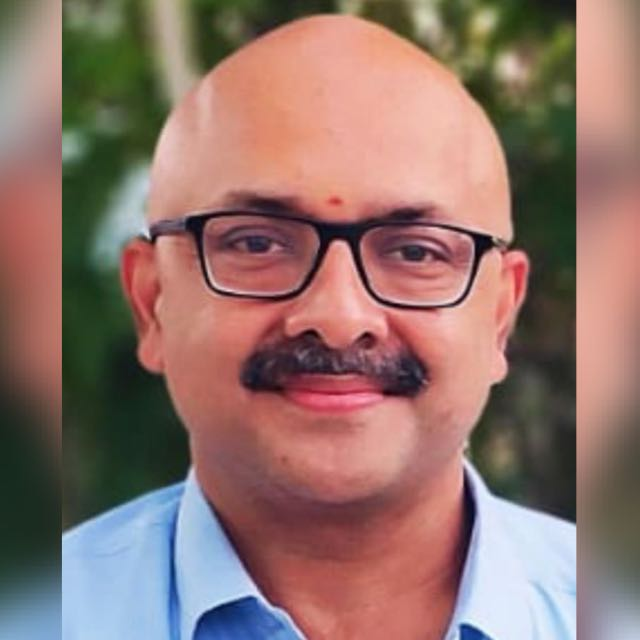 Mr. Rajesh Govindarajulu is one of the founding members of the Verandah Club Pvt. Ltd. He is a leading columnist, historian, jeweler, entrepreneur, and a heritage enthusiast who is earnestly working to revive the past in the light of the present. Experiential learning about the history of Coimbatore is his main course of interest and he is also a panel member of many colleges in the city.
Mr. Rajesh Govindarajulu is one of the founding members of the Verandah Club Pvt. Ltd. He is a leading columnist, historian, jeweler, entrepreneur, and a heritage enthusiast who is earnestly working to revive the past in the light of the present. Experiential learning about the history of Coimbatore is his main course of interest and he is also a panel member of many colleges in the city.
NEXT ARTICLE